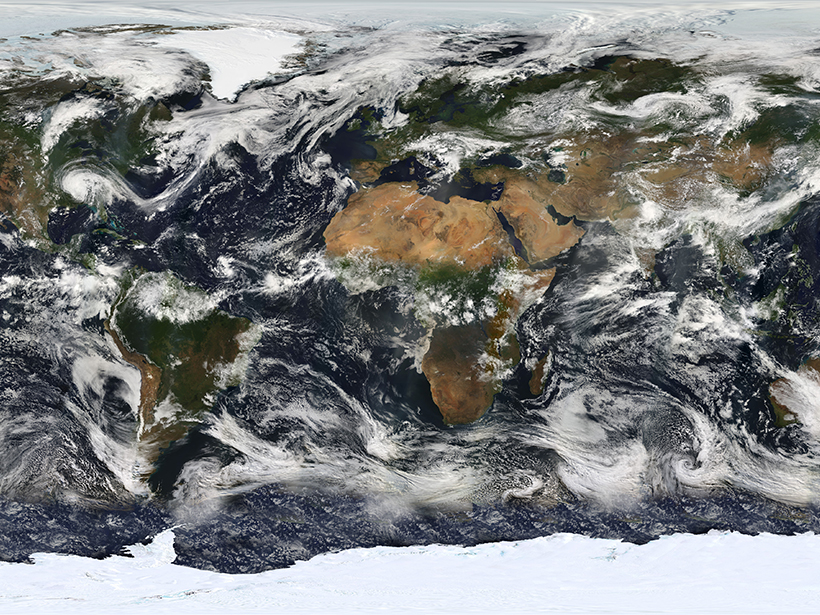Source: Geophysical Research Letters
When it comes to forecasting climate change, there’s one huge wild card: clouds. By reflecting, absorbing, and emitting radiation, clouds (and fine particles known as aerosols) play a major role in the planet’s energy balance and thus in setting Earth’s temperature. And yet whether an individual cloud warms the planet or cools it depends on its size, latitude, altitude, albedo, and other physical parameters. For decades, climate models have strongly disagreed on how cloud properties—and their effects on Earth’s energy budget—will change with global warming, making clouds the biggest source of uncertainty in climate model predictions.
Thus, climate scientists will be able to narrow uncertainty in forecasting climate change only if they can better constrain the feedbacks from clouds. With that in mind, Zelinka et al. decompose cloud feedbacks to better connect them to specific physical processes.
To do this, the team used so-called cloud radiative kernels along with detailed model cloud information provided by the International Satellite Cloud Climatology Project Simulator. They calculated the feedback due to 49 different types of clouds—which were divided into seven altitude categories and seven optical depth categories. Over the past few years, kernels have become a common tool for comparing cloud feedbacks among climate models.
In this case, the authors refined the technique to compute amount, altitude, and optical depth feedbacks separately for upper-level and low-level clouds. Low-level clouds are those that reside in the boundary layer, the layer of Earth’s atmosphere directly influenced by its surface. Upper-level clouds reside above the boundary layer and are affected by different processes.
The team discovered that all climate models agree on the direction of three main feedbacks that accompany global warming. First, upper-level clouds rise to higher altitudes in all models, warming the planet by trapping more heat. Although this was previously known, the positive feedback is actually smaller and better constrained than past research has suggested. Second, low-level cloud cover decreases in all models, warming the planet by reflecting less incoming sunlight back to space. And third, the optical depth of low-level clouds increases in all models, cooling the planet by reflecting more sunlight.
Decomposing cloud feedbacks into individual components provides valuable insights into the individual mechanisms at play. This is crucial if we want to understand and constrain cloud feedbacks and to forecast how the planet will react to climate change. (Geophysical Research Letters, doi:10.1002/2016GL069917, 2016)
—Shannon Hall, Freelance Writer
Citation:
Hall, S. (2016), Eliminating uncertainty one cloud at a time, Eos, 97, https://doi.org/10.1029/2016EO059887. Published on 03 October 2016.
Text © 2016. The authors. CC BY-NC-ND 3.0
Except where otherwise noted, images are subject to copyright. Any reuse without express permission from the copyright owner is prohibited.

